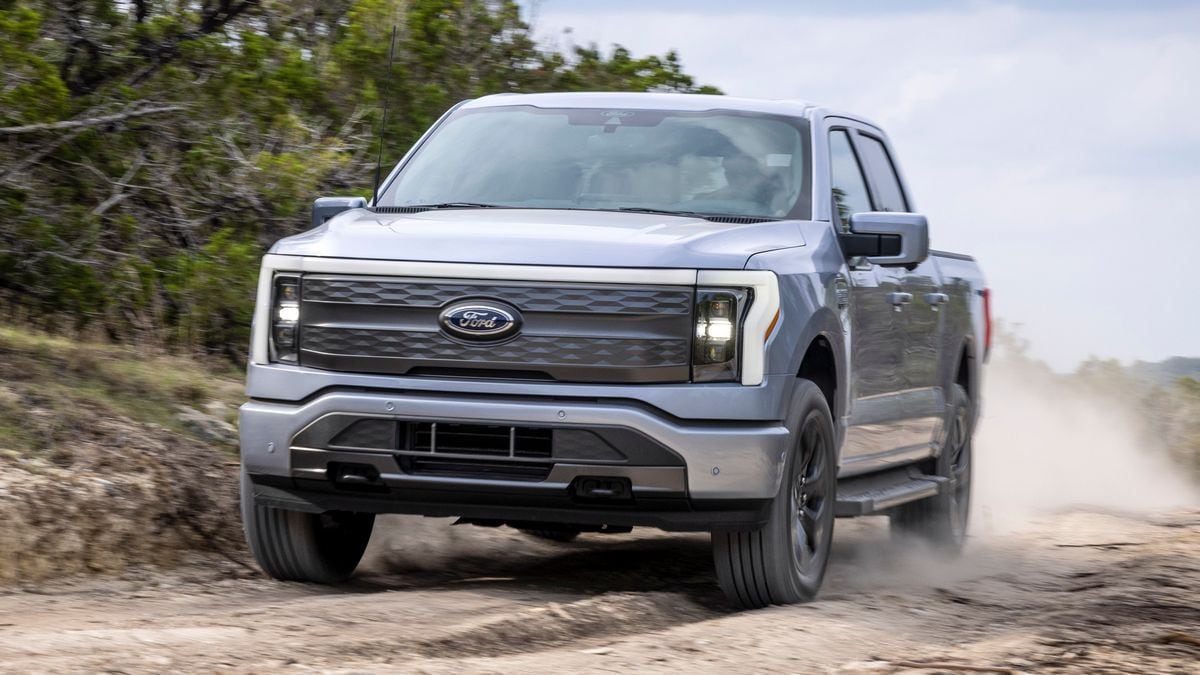Ford announced it canceled plans for a 3-row electric SUV and delayed a successor to its F-150 Lightning electric pickup. In their place, it plans to build a family of hybrid 3-row SUVs and an electric midsize pickup with a target launch date of 2027.
It’s the second time this year Ford has scaled back aggressive electric vehicle (EV) plans. The company delayed another planned pickup in April. Then, it announced plans to offer a hybrid variant of every gas-powered vehicle it sells by the end of the decade.
Ford’s mix of annual capital expenditures dedicated to pure electric vehicles will decline from about 40% to 30% this year, the company said.
One of Many Slowing Down
Many automakers appear to have bitten off too much too early in the race to go electric. Cadillac loosened its EV goals in May. Volvo did so last month.
A recent report from Automotive News found 11 automakers, from high-end marques like Bentley to mainstream brands like Honda, delaying some EV projects.
EV Transition Happening Slower Than Some Expected
The moves don’t show that America won’t transition to electric cars. In fact, sales are speeding up. Americans bought a record number of EVs in the second quarter.
New technologies follow a predictable adoption curve that analysts call the Gartner Hype Cycle, if you ever feel like falling down a research hole on the topic. It’s normal for early adopters to jump in quickly, creating an early sales surge. Then, adoption slows as more skeptical buyers need to see the technology prove itself and improve.
The end of the cycle is mass adoption. But it takes several swings up and down to get there.
A recent survey from Kelley Blue Book’s parent company, Cox Automotive, found that more than half of today’s EV skeptics expect to drop their objections by 2029, with 80% open to buying an EV by 2034.
That timing roughly aligns with government plans. New federal tailpipe emissions rules passed in March would require most automakers to build a lineup of more than half EVs by 2032. Similarly, new fuel economy rules require an EV-heavy lineup in the early 2030s.
And seven states have passed laws banning the sale of new gas-powered cars after 2035.
Incentives Made Factories Move Faster Than Buyers
In a recent conversation with KBB, Energy Secretary Jennifer Granholm predicted that EV sales would be “a bit of a steamroller,” gaining momentum slowly before becoming hard to stop.
The 2022 Inflation Reduction Act created front-loaded tax incentives for automakers to build new factories and supply lines that would help them build EV-heavy lineups in the future. Those incentives were first-come, first-served, so automakers rushed to build infrastructure for a future market.
Incentives also encourage buyers. They’re often eligible for a $7,500 federal up-front tax rebate on many new EVs and a $4,000 rebate on used EVs. But those incentives have no expiration date. Many car shoppers are willing to wait for an improved EV charging infrastructure and cheaper EVs, knowing they can use the rebate later.
With front-loaded incentives to build factories and incentives without time limits for buyers, some automakers became like hardware stores with a stockroom full of snow shovels in June. They’re still going to sell. But maybe not soon.
Hybrids Much More Popular Now
Many car shoppers are waiting to go electric. But they’re still looking to spend less at the pump.
The result? A hybrid sales surge. Americans bought 41% more hybrids in the second quarter of 2024 than during the same period in 2023. They bought 49% more plug-in hybrids — hybrids that can recharge from a wall plug and travel some distance on electricity alone before using any gasoline.
Ford Looking to Go Smaller, Cheaper
Ford’s EV plans, meanwhile, focus on less expensive cars. The company notes that, in 2022, it “established a skunkworks team in California focused on changing the company’s approach to next-generation vehicle development and bending the cost curve on electric vehicles.”
More of its development will not focus on smaller, less-expensive EVs. “The first affordable vehicle off this new platform will be a mid-sized electric pickup launching in 2027 that is expected to cater to customers who want more for their money — more range, more utility, more useability.”
Announcing the move, Ford cited a need to compete with low-cost EVs from China that aren’t yet available in the U.S. market.








